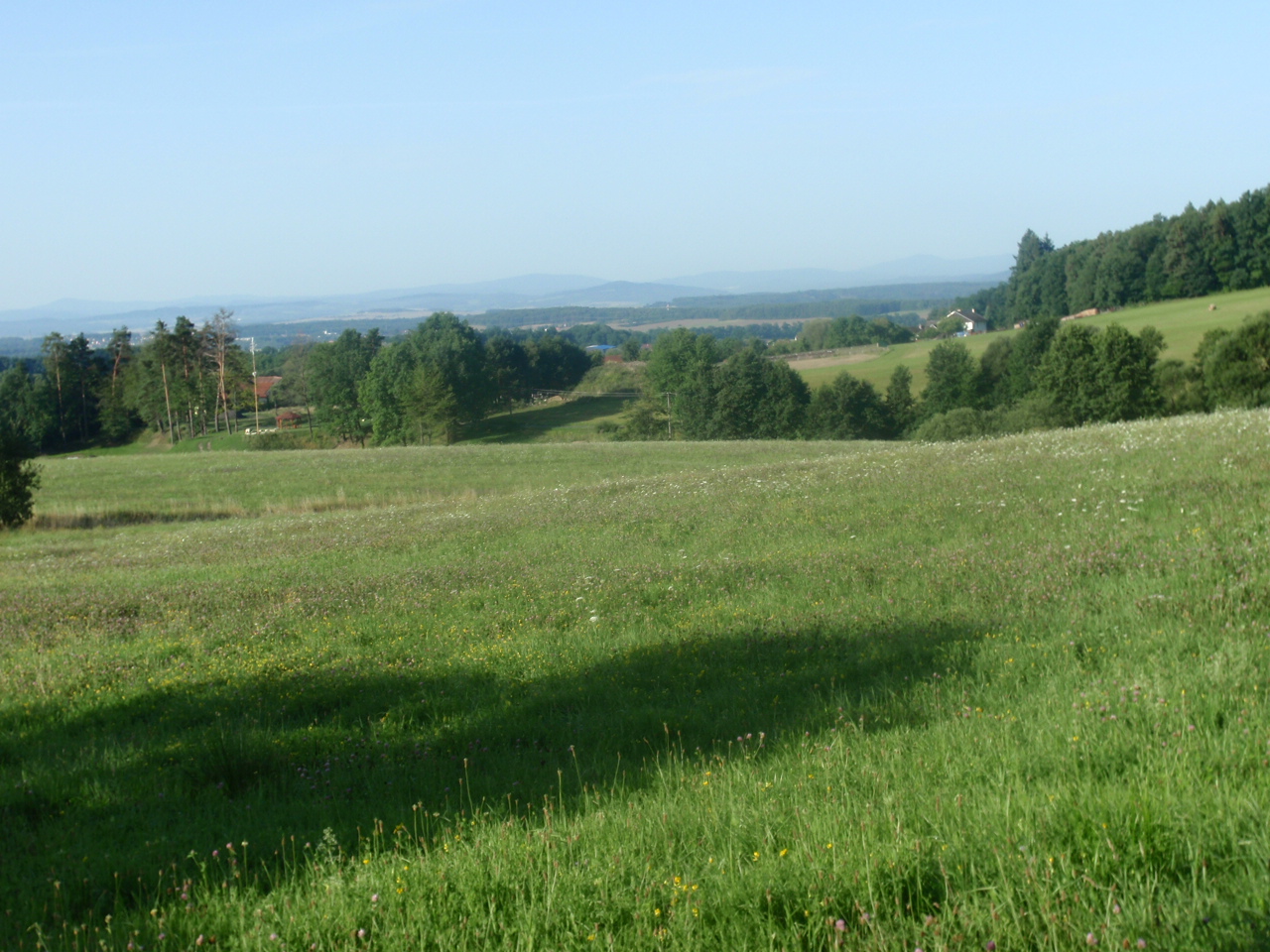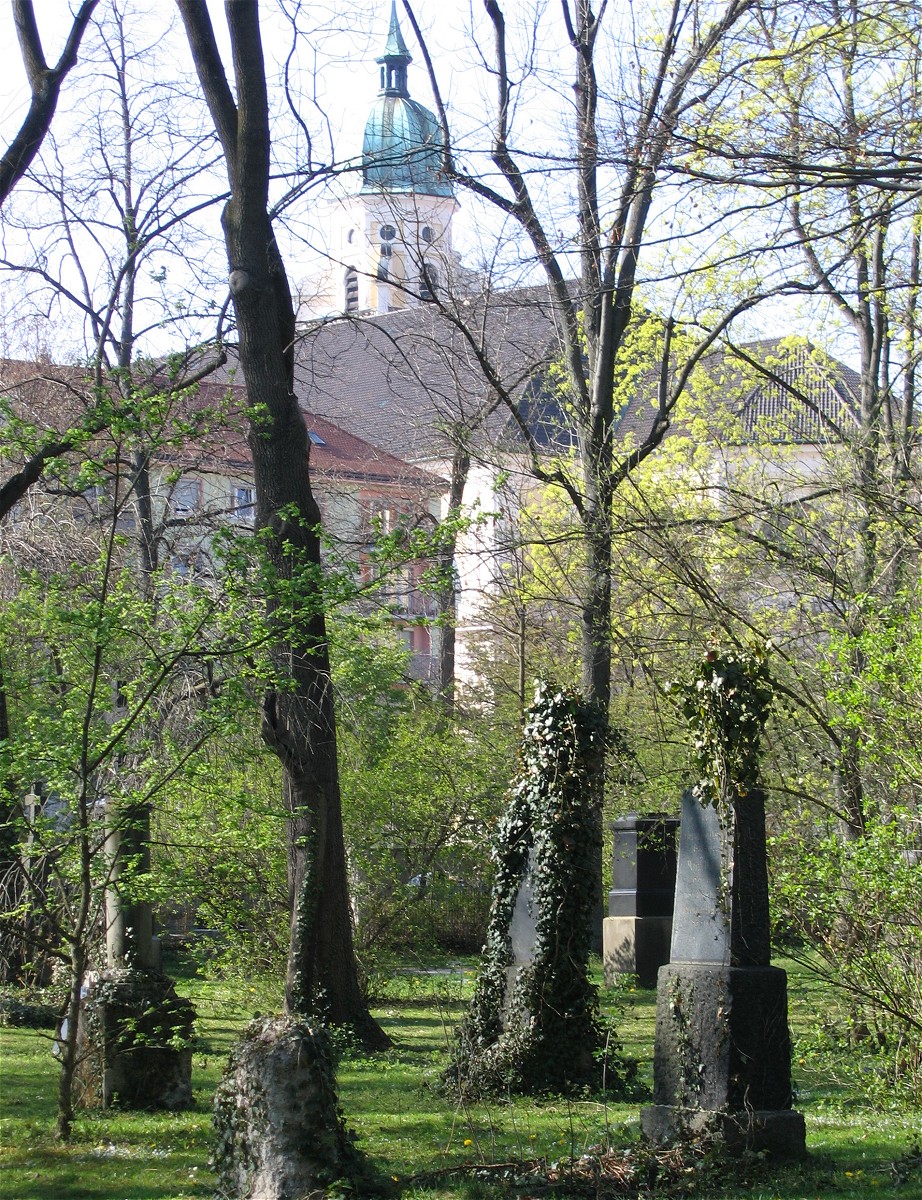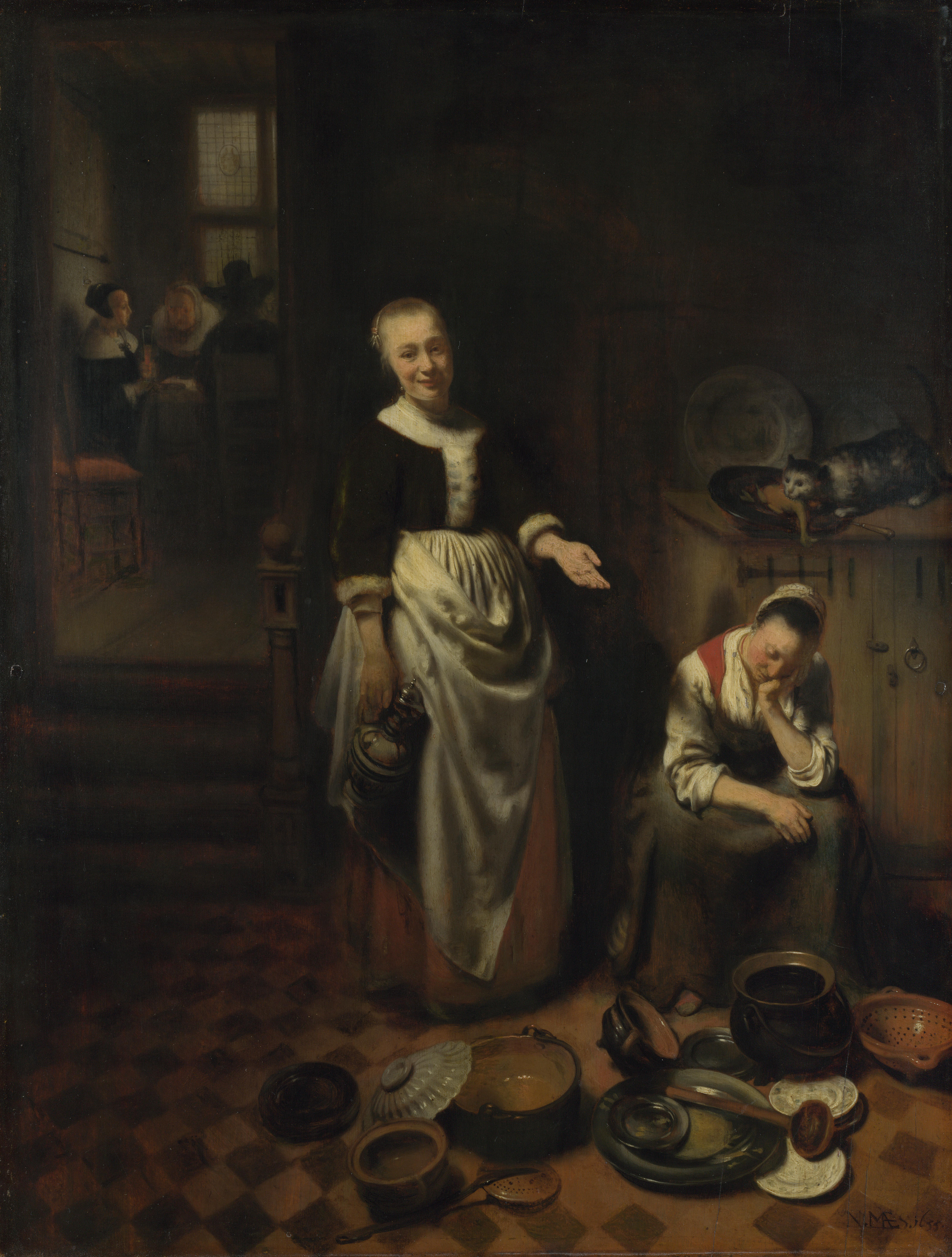|
Georg Jauss
Georg Jauss (15 March 1867, in Hattenhofen – 6 March 1922, in Munich) was a German landscape painter who worked in Bavaria. Life Jauss was the eldest of six children born to Anna Maria and Leonhard Jauss (a mason and farmer). From 1873 to 1880, he attended the elementary school in Hattenhofen, where the Pastor discovered that he had talent for drawing and arranged for him to take lessons at Göppingen. In 1883, he became a fellow at the Academy of Fine Arts and Design in Stuttgart. Jakob Grünenwald was one of his instructors; his fellow students included Christian Landenberger and Bernhard Buttersack. He took a study trip to Italy in the summer of 1890 and, after his military service, went to the Dachau District where his interests changed from genre painting to landscapes. In 1895, he became a teacher at the Munich Association of Women Artists and joined the Munich Secession The Munich Secession was an association of visual artists who broke away from the m ... [...More Info...] [...Related Items...] OR: [Wikipedia] [Google] [Baidu] |
Dachau (district)
Dachau () is a ''Landkreis'' (district) in Bavaria, Germany. It is bounded by (from the south and clockwise) the districts of Fürstenfeldbruck, Aichach-Friedberg, Pfaffenhofen, Freising and Munich, and by the city of Munich. History The district was established in 1952. There were slight changes to the territory in the administrative reform of 1972. Geography The district extends from the northwestern suburbs of Munich to the so-called Dachauer Land. It is a hilly countryside, which is now densely populated. The growing Munich metropolitan area is advancing more and more into the district's territory. Coat of arms The arms include a red zigzag line on white background, which was the heraldic figure of the Wittelsbach The House of Wittelsbach () is a German dynasty, with branches that have ruled over territories including Bavaria, the Palatinate, Holland and Zeeland, Sweden (with Finland), Denmark, Norway, Hungary (with Romania), Bohemia, the Electorate ... fam ... [...More Info...] [...Related Items...] OR: [Wikipedia] [Google] [Baidu] |
German Male Painters
German(s) may refer to: * Germany (of or related to) **Germania (historical use) * Germans, citizens of Germany, people of German ancestry, or native speakers of the German language ** For citizens of Germany, see also German nationality law ** Germanic peoples (Roman times) * German language **any of the Germanic languages * German cuisine, traditional foods of Germany People * German (given name) * German (surname) * Germán, a Spanish name Places * German (parish), Isle of Man * German, Albania, or Gërmej * German, Bulgaria * German, Iran * German, North Macedonia * German, New York, U.S. * Agios Germanos, Greece Other uses * German (mythology), a South Slavic mythological being * Germans (band), a Canadian rock band * "German" (song), a 2019 song by No Money Enterprise * '' The German'', a 2008 short film * " The Germans", an episode of ''Fawlty Towers'' * ''The German'', a nickname for Congolese rebel André Kisase Ngandu See also * Germanic (disambigua ... [...More Info...] [...Related Items...] OR: [Wikipedia] [Google] [Baidu] |
19th-century German Male Artists
The 19th (nineteenth) century began on 1 January 1801 ( MDCCCI), and ended on 31 December 1900 ( MCM). The 19th century was the ninth century of the 2nd millennium. The 19th century was characterized by vast social upheaval. Slavery was abolished in much of Europe and the Americas. The First Industrial Revolution, though it began in the late 18th century, expanding beyond its British homeland for the first time during this century, particularly remaking the economies and societies of the Low Countries, the Rhineland, Northern Italy, and the Northeastern United States. A few decades later, the Second Industrial Revolution led to ever more massive urbanization and much higher levels of productivity, profit, and prosperity, a pattern that continued into the 20th century. The Islamic gunpowder empires fell into decline and European imperialism brought much of South Asia, Southeast Asia, and almost all of Africa under colonial rule. It was also marked by the collapse of the la ... [...More Info...] [...Related Items...] OR: [Wikipedia] [Google] [Baidu] |
Landscape Painters
A landscape is the visible features of an area of land, its landforms, and how they integrate with natural or man-made features, often considered in terms of their aesthetic appeal.''New Oxford American Dictionary''. A landscape includes the physical elements of geophysically defined landforms such as (ice-capped) mountains, hills, water bodies such as rivers, lakes, ponds and the sea, living elements of land cover including indigenous vegetation, human elements including different forms of land use, buildings, and structures, and transitory elements such as lighting and weather conditions. Combining both their physical origins and the cultural overlay of human presence, often created over millennia, landscapes reflect a living synthesis of people and place that is vital to local and national identity. The character of a landscape helps define the self-image of the people who inhabit it and a sense of place that differentiates one region from other regions. It is the dynam ... [...More Info...] [...Related Items...] OR: [Wikipedia] [Google] [Baidu] |
1922 Deaths
Nineteen or 19 may refer to: * 19 (number), the natural number following 18 and preceding 20 * one of the years 19 BC, AD 19, 1919, 2019 Films * ''19'' (film), a 2001 Japanese film * ''Nineteen'' (film), a 1987 science fiction film Music * 19 (band), a Japanese pop music duo Albums * ''19'' (Adele album), 2008 * ''19'', a 2003 album by Alsou * ''19'', a 2006 album by Evan Yo * ''19'', a 2018 album by MHD * ''19'', one half of the double album '' 63/19'' by Kool A.D. * '' Number Nineteen'', a 1971 album by American jazz pianist Mal Waldron * ''XIX'' (EP), a 2019 EP by 1the9 Songs * "19" (song), a 1985 song by British musician Paul Hardcastle. * "Nineteen", a song by Bad4Good from the 1992 album ''Refugee'' * "Nineteen", a song by Karma to Burn from the 2001 album ''Almost Heathen''. * "Nineteen" (song), a 2007 song by American singer Billy Ray Cyrus. * "Nineteen", a song by Tegan and Sara from the 2007 album '' The Con''. * "XIX" (song), a 2014 song by Slip ... [...More Info...] [...Related Items...] OR: [Wikipedia] [Google] [Baidu] |
1867 Births
Events January–March * January 1 – The Covington–Cincinnati Suspension Bridge opens between Cincinnati, Ohio, and Covington, Kentucky, in the United States, becoming the longest single-span bridge in the world. It was renamed after its designer, John A. Roebling, in 1983. * January 8 – African-American men are granted the right to vote in the District of Columbia. * January 11 – Benito Juárez becomes Mexican president again. * January 30 – Emperor Kōmei of Japan dies suddenly, age 36, leaving his 14-year-old son to succeed as Emperor Meiji. * January 31 – Maronite nationalist leader Youssef Bey Karam leaves Lebanon aboard a French ship for Algeria. * February 3 – '' Shōgun'' Tokugawa Yoshinobu abdicates, and the late Emperor Kōmei's son, Prince Mutsuhito, becomes Emperor Meiji of Japan in a brief ceremony in Kyoto, ending the Late Tokugawa shogunate. * February 7 – West Virginia University is established in Morgantown, West Virgin ... [...More Info...] [...Related Items...] OR: [Wikipedia] [Google] [Baidu] |
Alter Nordfriedhof (Munich)
The Alter Nordfriedhof ("Old North Cemetery") is a former cemetery located in the Arcisstrasse in Maxvorstadt, Munich, Bavaria, Germany. It is not to be confused with the Nordfriedhof in Munich, which was set up only a short time later in Schwabing. Construction began in 1866 to designs by the city architect Arnold Zenetti. History Until the middle of the 19th century the city of Munich had only a single public burial ground, the present Alter Südfriedhof. This was growing too small however for the rapidly growing city, and planning therefore began for a new burial ground in the north of the city. Between June 1866 and the summer of 1869 the Northern Cemetery ("Nördlicher Friedhof") was built in Maxvorstadt. The planning process itself reflected the split in society regarding cemeteries and public buildings generally: on the one hand there was a general wish to have the most prominent grave site possible, but on the other hand an equally general feeling that the cemet ... [...More Info...] [...Related Items...] OR: [Wikipedia] [Google] [Baidu] |
Munich Secession
The Munich Secession was an association of visual artists who broke away from the mainstream Munich Artists' Association in 1892, to promote and defend their art in the face of what they considered official paternalism and its conservative policies. They acted as a form of cooperative, using their influence to assure their economic survival and obtain commissions. In 1901, the association split again when some dissatisfied members formed the group Phalanx. Another split occurred in 1913, with the founding of the New Munich Secession. Background By the end of the nineteenth century, more artists lived in Munich than lived in Vienna and Berlin put together. However, the art community there was dominated by the conservative attitudes of the Munich Artists' Association and its supporters in the government. These attitudes found expression in the official "mission statements", written by the so-called "Prince of Painters" (''Malerfürst'') Franz von Lenbach. Matters came to a head ... [...More Info...] [...Related Items...] OR: [Wikipedia] [Google] [Baidu] |
Genre Art
Genre art is the pictorial representation in any of various media of scenes or events from everyday life, such as markets, domestic settings, interiors, parties, inn scenes, work, and street scenes. Such representations (also called genre works, genre scenes, or genre views) may be realistic, imagined, or romanticized by the artist. Some variations of the term ''genre art'' specify the medium or type of visual work, as in ''genre painting'', ''genre prints'', ''genre photographs'', and so on. The following concentrates on painting, but genre motifs were also extremely popular in many forms of the decorative arts, especially from the Rococo of the early 18th century onwards. Single figures or small groups decorated a huge variety of objects such as porcelain, furniture, wallpaper, and textiles. Genre painting ''Genre painting'', also called ''genre scene'' or ''petit genre'', depicts aspects of everyday life by portraying ordinary people engaged in common activities. One commo ... [...More Info...] [...Related Items...] OR: [Wikipedia] [Google] [Baidu] |
Bernhard Buttersack
Bernhard Buttersack (16 March 1858, Bad Liebenzell — 6 May 1925, Icking) was a German landscape painter of the Munich School. Life and work He displayed artistic talent at an early age, was encouraged by his parents and began his studies at the Royal Art School in Stuttgart under Jakob Grünenwald and Albert Kappis. Upon completing his course there, he became a master pupil of Hermann Baisch and Gustav Schönleber in Karlsruhe. He worked in Munich from 1884 to 1889 and was soon appointed a Royal Professor by the Prince Regent Luitpold. In 1891, he was awarded a Gold Medal at the Glaspalast and, the following year, was one of the founders of the Munich Secession. Towards the end of 1889, he moved to Dachau County, inspired by the dramatic landscapes there. Four years later, after several moves, he settled in Haimhausen, where he built a spacious house with a large art studio and landscaped garden. He soon opened a private art school and began what became the Haimhausen A ... [...More Info...] [...Related Items...] OR: [Wikipedia] [Google] [Baidu] |







